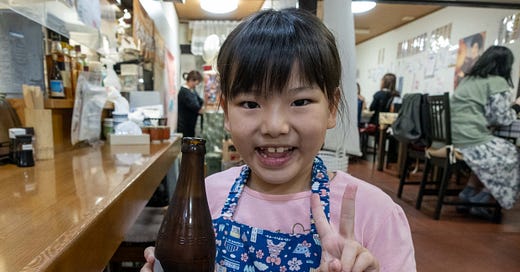Walking Japan (again): From Fukuoka to Nagasaki
I return for the craftsmanship, thoughtfulness, and care of the Japanese, not for the scenery
(This is my third long walk in Japan; the first was from Tokyo to Niigata, the second from Akashina to Fuji.
Here are my six prior posts from those trips: From Tokyo to Takasaki, A retreat to Niigata, A pointless little Japan story, From Akashina to Fuji, Walking Fuji, Playgrounds and manhole covers)
I returned to Japan for a third long walk because it’s an easy and rewarding place for week-long treks. It’s small, dense, and energetic, so you can chart a two-hundred-mile course that doesn’t require too much hugging the sides of busy roads. It allows rest each night in a different community, and there is ubiquitous, and extensive public transportation.1 Should you ever need the boost from a train, you can get it. In that way it’s very similar to England, a country I’ve done two long walks in, and will do more.
The similarities between England and Japan are much deeper than both being island nations that are pleasant to walk long distances in. As I’ve written before they are culturally relatable at the thin and thick level, but there’s one big cosmetic difference: Urban Japan is pretty unattractive. Unlike in England, there’s little of Japan’s long past present today, certainly not in the form of neighborhoods of well-persevered buildings. Instead most cities are dense, expansive modern affairs, stuffed with single to twenty story basic rectangular buildings, that if adorned at all, have a garish skin of bright and grating ads. They have a cluttered boxiness that look as if they were designed by a kid on a computer without any access to the curve tool.
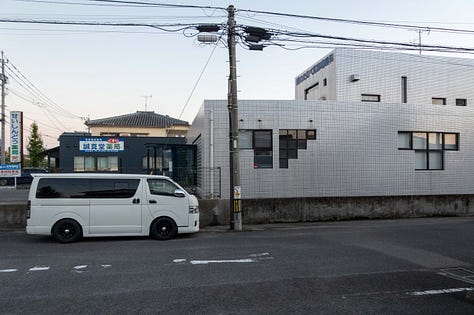
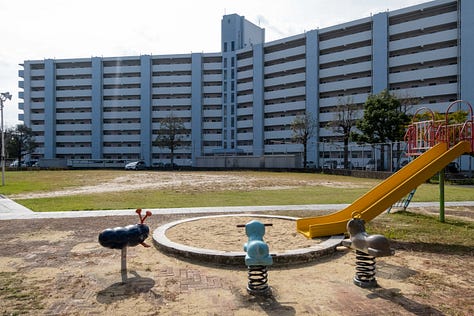
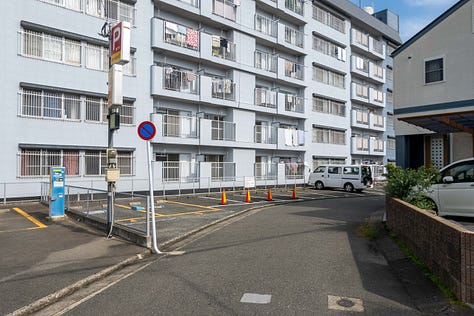
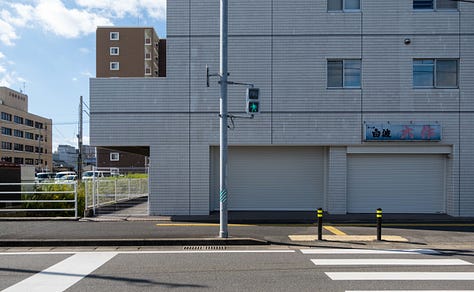
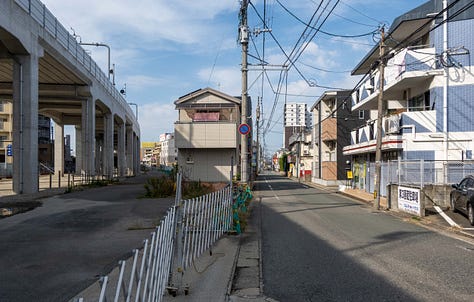
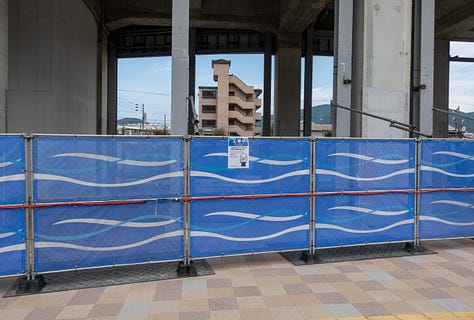
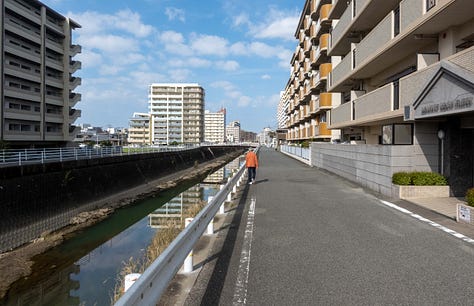
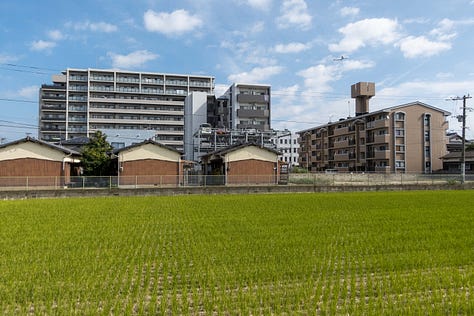
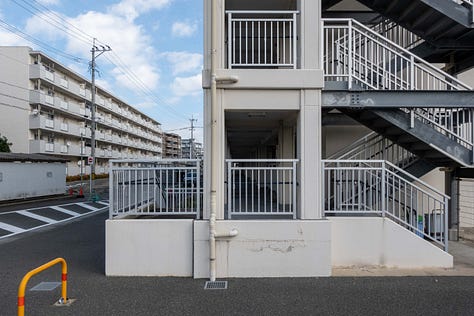
Japanese cities, while scoring the highest on my walkability scale, do not look like what most people imagine that means. There are a lot of cars in Japan, and while pedestrians and cyclists come first in priority2, it still means there are plenty of roads and sections of town that look like US suburban sprawl, and other than the language on the signs, could fit well in Southern California, or outside of Dallas.
Even then, in these neighborhoods, which make up a surprisingly large portion of Japan, there are large differences that favor Japan. No matter how ghastly, cluttered, and tacky these strips are, they are always impeccably clean (almost to a fault3), orderly, and safe to walk through.
If there is street crime in Japan, or public displays of anti-social behavior, I’ve yet to find it. I’ve also yet to find a driver, or another pedestrian for that matter, who doesn’t respect the clearly designated, signed, and timed, crosswalks, again to a point of orderliness that at times frustrates my “lived in New York city for twenty years and loves to jaywalk” mind, as when I’m standing for over a minute at the edge of a completely empty road, next to an older woman shooting me “Don’t you even think about it you large uncouth Gaijin” looks, waiting for the little red pedestrian to finally turn green.
This good behavior isn’t limited to one’s social class, it permeates all of Japanese society, something you notice more fully when you walk a hundred miles in a week, which requires interacting with all strata of society in very different physical locations.
Japan might have fully embraced the modern world when it comes to the physical stuff of life, like trains, cars, homes, appliances4, and how cities look, but they are still very traditional when it comes to the cultural realm — how they approach their roles as citizens and neighbors, and how they approach the point of living.
Being a proper Japanese citizen is essential to the Japanese in a way that’s significantly different from the US and most of the western world. You have an obligation of proper behavior to the community, family, and nation that trumps your own bespoke desires, and consequently limits your anti-social desires in a way that no amount of police in less self-controlled societies can replicate. You don’t toss garbage into the streets because of shame, not just because of the fine attached by the state to it.
I don’t think it is a stretch to say the Japanese approach being a citizen as a craft to master, with their elders as the guild leaders, which makes sense because I believe the most salient cultural feature of Japan is a dedication to craftsmanship that extends to almost every part of life. That is also similar to England, a country with a long history of craftsmanship, but with the big difference that in Japan it’s the default state, where for the English being a dedicated hobbyist is an often celebrated eccentricity.
Everyone in Japan, from the garbage collector to the sushi chef to the daughter working in the family izakaya to the perfume saleswoman at the Aeon department store, performs their job with a seriousness, care, and thoughtfulness that is shocking as an outsider.

